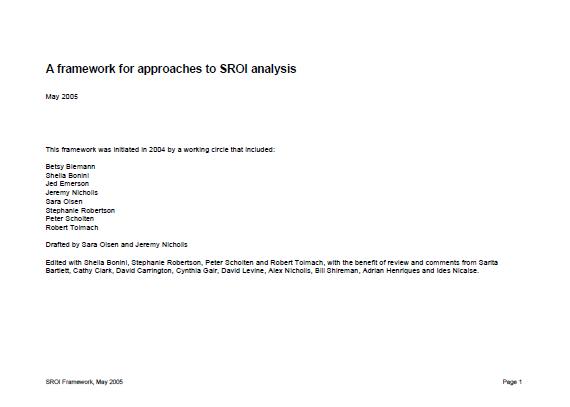The purpose of the framework presented here is to:
- establish a shared understanding of the various methods used for the monetization exercise within Social Return on Investment Analysis by collecting, including and explaining the different options for calculating monetized SROI;
- ensure that organizations at many different states of development and capacity and across many sectors can conduct SROI Analysis;
- ensure that SROI Analyses are presented in a way that facilitates accurate interpretation of results, avoids misinterpretation and assist in comparing organizations approaches to understanding their impacts; and
- lay the groundwork for standardization so that calculated SROI become more comparable over time.
This framework is primarily aimed at those who are already familiar with monetized SROI Analysis and involved in organizational performance assessment that considers non-financial performance: primarily internal management of businesses and nonprofits, and investors in these organizations. It will also be of interest to others developing ways of understanding and quantifying organizations’ impact on stakeholders and for policy makers for whom issues of social benefit are important. As the use of SROI Analysis grows, the authors expect that the framework will be refined. We recognize that, although there are a number of activities common to any SROI analysis, there are points in the process at which choices must be made to enable analyses of varying levels of complexity that still comply with a common set of principles.
The choices depend, for example, upon differences in information available from internal management information systems, time or skills available, and personal judgment. It is expected that organizations will begin with limited scope and detail of analyses, and that many will increase the comprehensiveness of their analyses over time.
The variety of levels of comprehensiveness makes the framework both flexible and accessible: it is flexible enough to be applied in a way that is sensitive to the context of a given organization, but it also gives rise to the possibility that like organizations could prepare SROI analyzes with different SROI numbers. Therefore, two SROI numbers can be compared when and if the identical options have been selected and assumptions made. The SROI Report is critical, since it is where these choices and assumptions are made explicit.
Source
Theme





